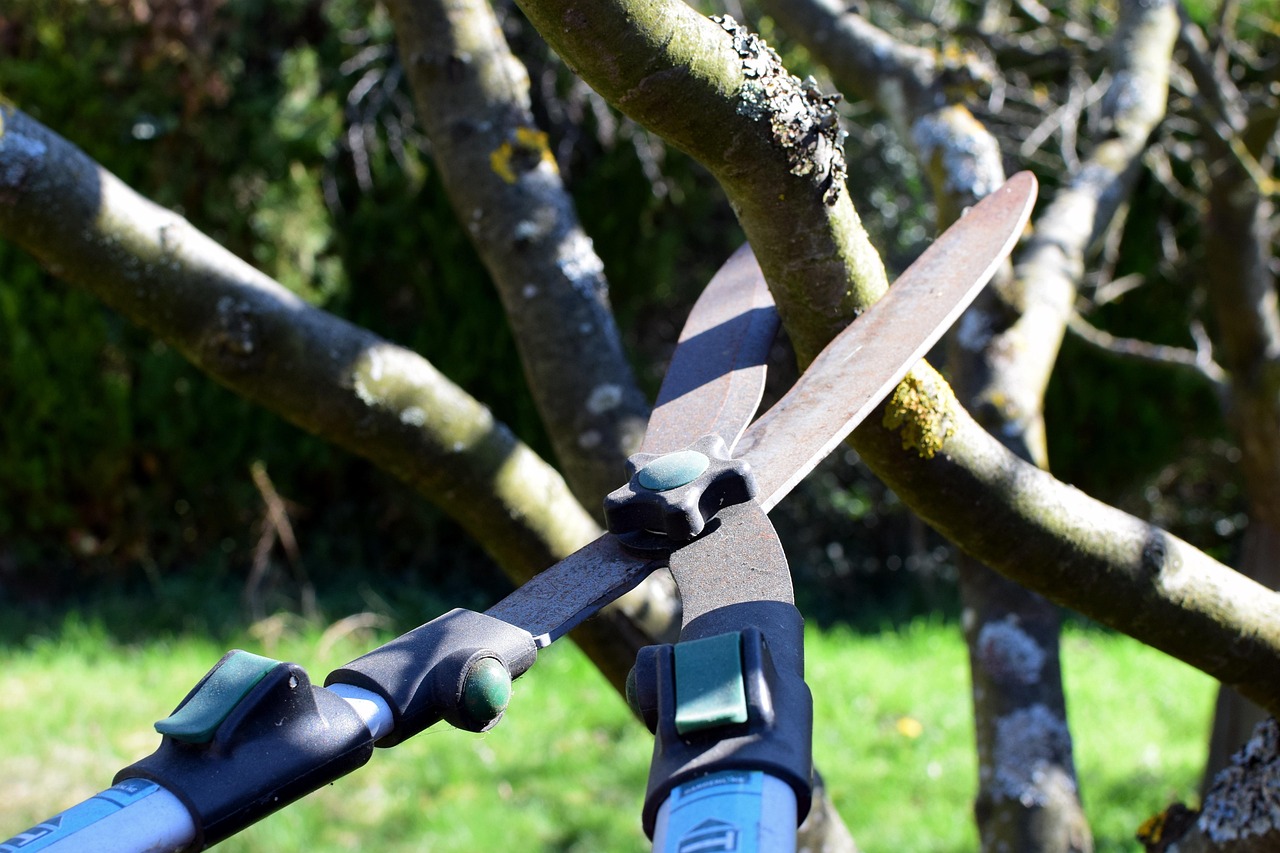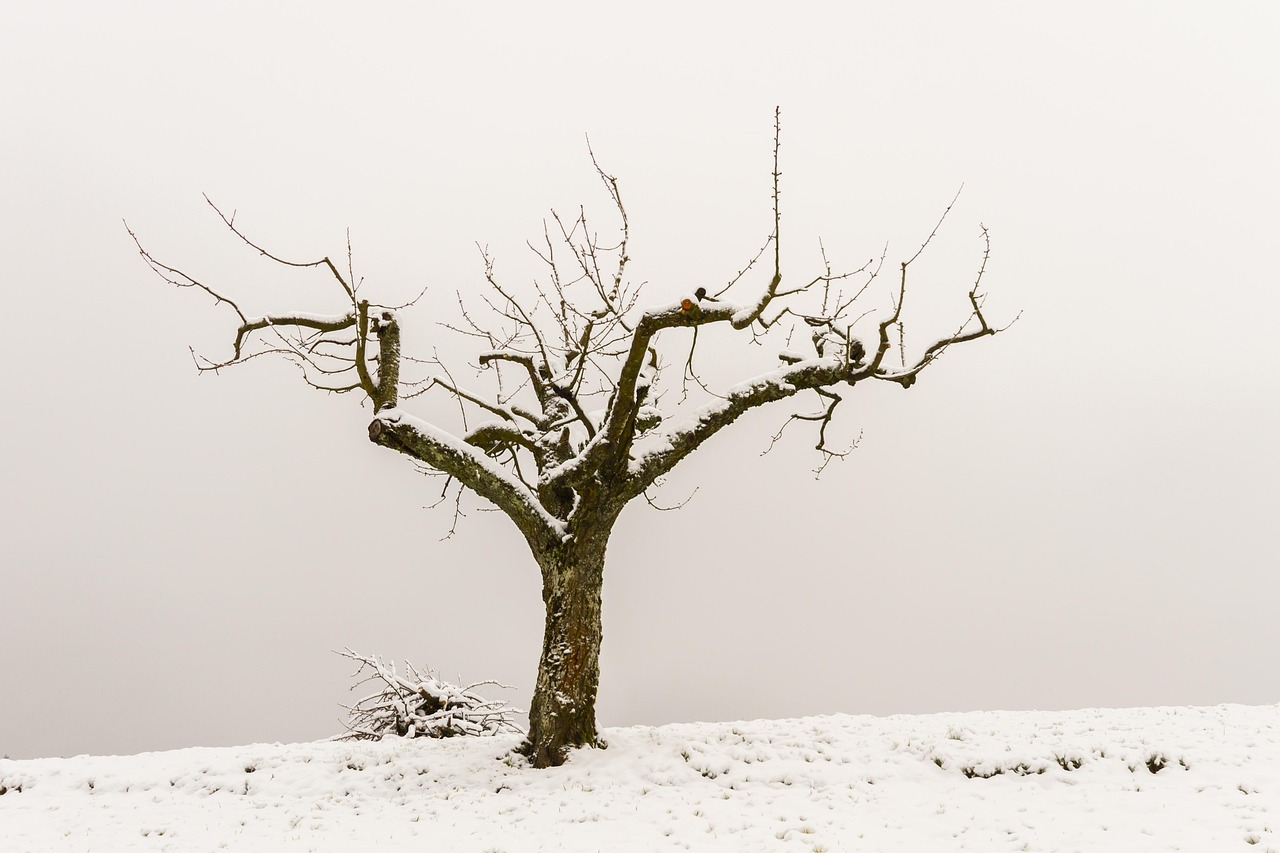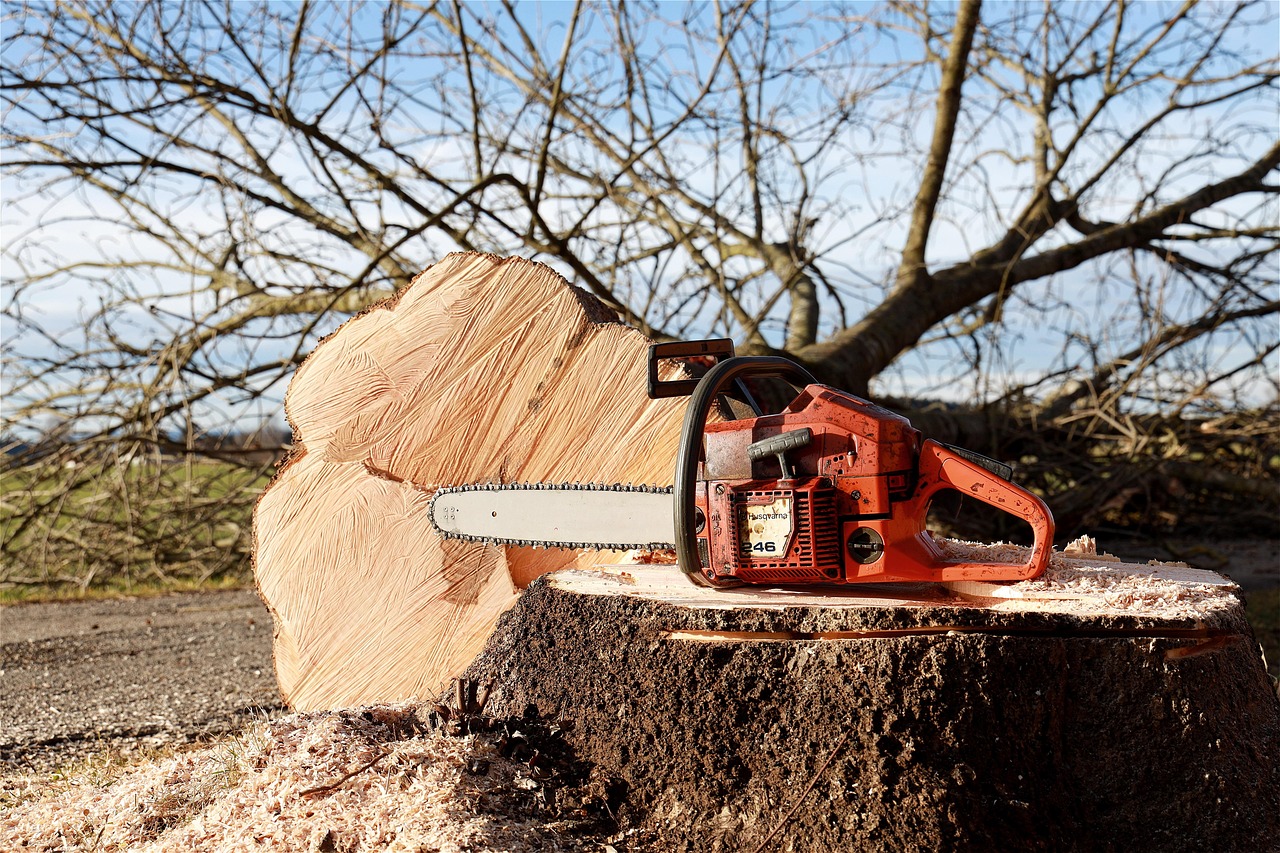Tree pruning significantly enhances curb appeal in suburban areas by improving the health of trees, maintaining a tidy appearance, and showcasing the property’s landscaping. Regular pruning can also prevent potential hazards caused by overgrown branches.
The Importance of Tree Pruning
Tree pruning is a critical aspect of landscape maintenance. It involves selectively removing branches and foliage to improve the overall health and aesthetics of trees. In suburban areas, where homes are often closely spaced, the appearance of trees can greatly impact property values and neighborhood charm.

Regular pruning helps to shape trees, ensuring they grow in a desirable direction. This process can prevent branches from obstructing walkways or power lines, reducing potential hazards. Moreover, well-pruned trees allow more sunlight to reach the ground, benefiting other plants and grass in the yard.
Pruning also encourages healthy growth. By removing dead or diseased branches, you can protect your trees from pests and diseases. This practice not only maintains tree health but also enhances the visual appeal of your property. When trees are well-maintained, they can serve as beautiful focal points in your landscaping.
Benefits of Pruning for Curb Appeal
Enhancing curb appeal through tree pruning offers several advantages:

- Improved Aesthetics: Neatly pruned trees look more attractive. They create a welcoming atmosphere for visitors and passersby.
- Increased Property Value: Homes with well-maintained landscaping often sell for higher prices. Buyers appreciate the effort put into tree care.
- Healthier Trees: Regular pruning promotes better air circulation and sunlight exposure. This leads to healthier foliage and stronger trees.
- Safety: Reducing the risk of falling branches protects your home, vehicles, and pedestrians.
When to Prune Trees
Timing is crucial when it comes to tree pruning. The best time to prune depends on the type of tree and its growth pattern. Here are some general guidelines:
| Tree Type | Best Time to Prune | Reason |
|---|---|---|
| Deciduous Trees | Late winter to early spring | Promotes healthy growth before new leaves emerge. |
| Evergreen Trees | Late spring to early summer | Allows for the removal of any dead or damaged branches. |
| Flowering Trees (spring) | After flowering | Avoids cutting off flower buds for the next year. |
| Flowering Trees (summer) | Late winter to early spring | Encourages new growth before blooming season. |
Basic Pruning Techniques
Understanding basic pruning techniques can help you achieve optimal results. Here are some essential methods:
- Thinning: This technique involves removing selected branches to improve air circulation and light penetration.
- Heading Back: Cutting back a branch to a bud encourages new growth in that area. This is useful for shaping the tree.
- Reduction: This method reduces the size of a tree or branch while maintaining its shape. It is particularly helpful for overgrown trees.
- Cleansing: Removing dead, damaged, or diseased branches helps protect the tree’s health.
Tools Needed for Pruning
Using the right tools is essential for effective pruning. Here are some common tools you should have:

- Hand Pruners: Ideal for small branches and precise cuts.
- Loppers: Useful for cutting larger branches that are out of reach.
- Saws: A small saw is necessary for thicker branches that cannot be cut with pruners or loppers.
- Gloves: Protect your hands while handling tools and branches.
- Ladder: Ensure safety when reaching higher branches.
Cautions to Consider
While pruning is beneficial, it is essential to take certain precautions. Over-pruning can harm trees and inhibit growth. Always remember:
- Avoid cutting too much at once; follow the one-third rule—never remove more than one-third of a tree’s canopy in a single season.
- If you are unsure, consider hiring a professional arborist. They can provide expertise and ensure proper techniques are used.
In summary, tree pruning is an essential practice for enhancing curb appeal in suburban areas. It not only improves aesthetics but also contributes to the health and safety of your trees. Understanding when and how to prune, along with using the right tools, will lead to a more attractive landscape.
Common Tree Species in Suburban Areas
Understanding the types of trees commonly found in suburban areas can help you tailor your pruning techniques effectively. Different species have unique growth patterns, health issues, and aesthetic qualities. Here are some popular tree species often seen in suburban landscapes:

- Maple Trees: Known for their vibrant fall colors, maples are often pruned to maintain their shape and size.
- Oak Trees: These sturdy trees provide excellent shade. Pruning is essential to remove dead branches and promote healthy growth.
- Cherry Trees: Famous for their beautiful blossoms, cherry trees benefit from careful pruning to enhance flowering.
- Pine Trees: Evergreens like pines require specific pruning techniques to maintain their natural shape and health.
- Crape Myrtles: This flowering tree needs regular pruning to encourage blooms and control its size.
Seasonal Considerations for Tree Pruning
Pruning at the right time of year is crucial for optimal results. Each season presents unique opportunities and challenges when it comes to tree care. Here’s a breakdown of seasonal considerations for tree pruning:
Spring Pruning
Spring is a time of renewal for many trees. However, early spring pruning should focus mainly on:
- Removing any dead or damaged branches that may have been affected during winter.
- Thinning crowded areas to improve air circulation.
Summer Pruning
Summer is ideal for shaping trees. It allows you to:
- Identify growth patterns and make adjustments.
- Remove any unwanted suckers or water sprouts that detract from the tree’s shape.
Autumn Pruning
Autumn is generally not recommended for extensive pruning. However, you can:
- Clean up fallen branches and leaves.
- Prepare trees for winter by ensuring they are free from disease or pests.
Winter Pruning
Winter is an excellent time for pruning most deciduous trees since they are dormant. This allows for:
- Easier visibility of the tree structure without foliage.
- A chance to make significant cuts without disturbing the tree’s growth cycle.
Health Benefits of Proper Tree Pruning
Proper tree pruning not only enhances curb appeal but also significantly contributes to the overall health of your trees. Here are some key health benefits of regular pruning:
- Prevention of Disease: Removing dead or diseased branches helps prevent the spread of pathogens.
- Improved Growth: Pruning encourages new growth and can lead to a more robust tree structure.
- Pest Control: Regular maintenance helps manage pest populations by removing habitats where they thrive.
- Increased Longevity: Healthy trees live longer and provide better shade, aesthetics, and benefits to the environment.
Pruning for Safety and Accessibility
In suburban areas, safety is a top priority, especially when it comes to trees near homes and walkways. Here are some considerations regarding safety and accessibility when pruning:
- Clearance from Structures: Ensure that branches do not touch roofs, power lines, or buildings. This prevents damage and potential hazards.
- Pedestrian Pathways: Trim any overhanging branches that may obstruct sidewalks or driveways. This creates a safer environment for pedestrians and vehicle traffic.
- Visibility: Maintain clear sightlines at intersections by pruning trees that may block views, reducing the risk of accidents.
The Role of Tree Care Professionals
While many homeowners can manage basic pruning tasks, there are situations where hiring a professional arborist is beneficial. Here are some reasons to consider professional assistance:
- Expertise: Arborists have specialized knowledge about tree species, growth patterns, and health issues.
- Safety: Professionals use industry-standard equipment and techniques that minimize risks associated with heavy lifting or working at heights.
- Long-term Planning: An arborist can provide insights into the long-term health and maintenance needs of your trees based on their specific conditions.
Selecting the Right Professional
If you decide to hire a professional, it’s essential to choose the right one. Here are some tips for selecting a reliable tree care professional:
- Check Credentials: Ensure they are certified by a recognized arboriculture organization.
- Read Reviews: Look for customer feedback online to gauge their reputation and reliability.
- Get Multiple Quotes: Obtain estimates from several professionals to compare pricing and services offered.
- Ask Questions: Inquire about their experience, techniques used, and how they address tree health concerns.
Caring for trees through proper pruning is essential in maintaining the beauty and safety of suburban landscapes. Understanding the unique characteristics of different species, seasonal timing, health benefits, and when to seek professional help will ensure your trees remain healthy and visually appealing.
Advanced Pruning Techniques
Once you have mastered basic pruning techniques, you may want to explore more advanced methods. These techniques can help you achieve specific goals for your trees, such as improving health, enhancing aesthetics, or controlling growth. Below are some advanced pruning techniques worth considering:
Pollarding
Pollarding is a technique where the upper branches of a tree are cut back to promote new growth. This method is often used for trees that need to be kept at a manageable height.
- Benefits: Pollarding can create a unique aesthetic appearance and allows for easier maintenance.
- Considerations: It requires regular maintenance every few years to prevent excessive growth.
Crown Reduction
Crown reduction involves reducing the overall size of the tree’s canopy while preserving its natural shape. This technique is beneficial for trees that have outgrown their space.
- Benefits: Reduces wind resistance and minimizes the risk of branch failure.
- Considerations: Always cut back to a lateral branch to prevent stress on the tree.
Crown Thinning
This technique focuses on selectively removing branches within the canopy to improve light penetration and air circulation. Crown thinning is ideal for dense trees that may be competing for resources.
- Benefits: Enhances overall tree health and reduces the likelihood of disease.
- Considerations: Avoid removing too many branches to maintain the tree’s structural integrity.
Understanding Tree Growth Patterns
To effectively prune your trees, it is essential to understand their growth patterns. Each species has unique characteristics that influence how and when they should be pruned. Here are some common growth patterns:
Fast-Growing Trees
Fast-growing trees, such as willows and poplars, require more frequent pruning to manage their rapid growth. Here are some tips:
- Regular Maintenance: Schedule pruning at least once a year to control size and shape.
- Focus on Health: Remove dead or weak branches promptly to maintain overall health.
Slow-Growing Trees
Slow-growing trees, like oaks and magnolias, typically require less frequent pruning. However, proper timing is crucial.
- Minimal Pruning: Focus on removing only dead or diseased branches.
- Timing: Late winter is ideal for these species to minimize stress.
The Environmental Impact of Tree Pruning
Tree pruning plays a crucial role in maintaining not only individual trees but also the larger ecosystem. Here are some environmental benefits associated with proper pruning:
- Biodiversity Support: Healthy trees provide habitats for various wildlife species, contributing to local biodiversity.
- Aesthetic Value: Well-maintained trees enhance the beauty of suburban landscapes, positively impacting community pride and property values.
- Air Quality Improvement: Trees filter pollutants from the air, contributing to cleaner surroundings.
- Carbon Sequestration: Healthy trees absorb carbon dioxide, helping mitigate climate change.
Pest and Disease Management Through Pruning
Regular pruning can significantly aid in managing pests and diseases in trees. Understanding how to identify potential issues is crucial for effective prevention and intervention strategies. Here are some common pests and diseases that can be managed through proper pruning:
Pests
Pests can weaken trees by feeding on leaves, bark, or roots. Here are some common pests:
- Aphids: These small insects suck sap from leaves, leading to yellowing and distortion. Regularly inspect your trees and prune affected areas.
- Caterpillars: These larvae can cause significant leaf damage. Remove infested branches promptly to protect tree health.
Diseases
Diseases can spread quickly in dense tree canopies. Here are common diseases to watch out for:
- Canker Diseases: These cause sunken areas on bark and can lead to branch dieback. Prune away affected branches to prevent further spread.
- Powdery Mildew: This fungal disease appears as white powder on leaves. Thinning out the canopy improves air circulation and reduces humidity, discouraging its spread.
The Economic Benefits of Tree Pruning
Investing in tree pruning not only enhances aesthetics but also offers economic advantages for homeowners and communities. Here are some key economic benefits associated with proper tree care:
- Increased Property Value: Well-maintained trees can boost property values by enhancing curb appeal.
- Reduced Insurance Costs: Properly pruned trees pose fewer risks of damage, potentially lowering homeowner insurance premiums.
- Energy Savings: Strategically pruned trees can provide shade, reducing energy costs in hot months by lowering air conditioning needs.
The combination of advanced pruning techniques, understanding tree growth patterns, managing pests and diseases, and recognizing the environmental and economic impacts will elevate your approach to tree care. By investing time and effort into proper pruning practices, you can ensure healthy trees that enhance the beauty and value of suburban landscapes.
Community Involvement in Tree Pruning
In suburban areas, tree pruning can also foster a sense of community. Engaging neighbors in tree care initiatives not only enhances the environment but also strengthens social ties. Here are some ways to involve the community:
- Neighborhood Pruning Days: Organizing community events where residents come together to prune trees in shared spaces can promote collaboration and unity.
- Education Workshops: Hosting workshops on tree care and pruning techniques can empower residents with knowledge and skills, creating a more informed community.
- Collaboration with Local Organizations: Partnering with local environmental groups or schools can help spread awareness of the importance of tree health and maintenance.
Innovative Tree Care Practices
As technology advances, innovative practices in tree care are emerging. Some of these can enhance traditional pruning methods:
Use of Technology
Modern technology can aid in monitoring tree health and planning pruning schedules. Here are some innovative approaches:
- Drones: Drones can be used for aerial surveys to assess tree health and identify areas needing attention without climbing.
- Mobile Apps: There are several applications available that assist homeowners in tracking tree growth, health, and maintenance schedules.
Sustainability Practices
Adopting sustainable practices while pruning can minimize environmental impact:
- Organic Treatments: Using organic pest control methods during pruning helps maintain a healthy ecosystem.
- Recycling Green Waste: Consider composting or mulching pruned branches and leaves to enrich the soil, promoting further growth.
The Role of Local Governments and Regulations
Local governments play a crucial role in maintaining urban forestry. Understanding local regulations regarding tree pruning is important for homeowners. Here are key points to consider:
- Permits: Some municipalities require permits for significant pruning or removal of trees, especially if they are considered historical or protected.
- Community Programs: Many local governments offer programs that provide resources, funding, or expert advice for tree care initiatives.
- Urban Forestry Management Plans: These plans outline best practices for maintaining trees in urban areas and often include guidelines for pruning.
Final Thoughts
Tree pruning is an essential practice that goes beyond mere aesthetics; it significantly impacts the health of individual trees and the overall environment in suburban areas. By understanding the various aspects of tree care—from basic techniques to advanced strategies—you can make informed decisions that enhance your landscape.
Moreover, engaging with your community and utilizing innovative practices can further improve the effectiveness of your efforts while fostering a sense of belonging among residents. The benefits of proper tree pruning are numerous, ranging from increased property value to improved safety and environmental health.
As you embark on your tree care journey, remember that each cut is a step toward creating a healthier, more beautiful suburban landscape. With the right knowledge and commitment, you can cultivate trees that not only enhance your property but also contribute positively to your neighborhood and environment.
